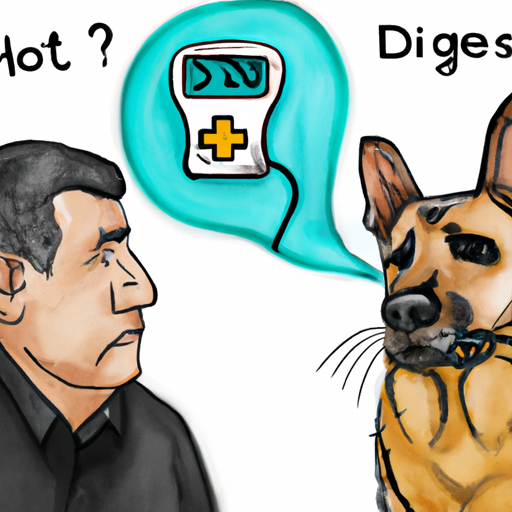Navigating the world of pet health can be a daunting task, especially when your furry friend is diagnosed with a condition like diabetes. This article aims to equip you with the knowledge and tools you need to manage your dog’s high blood sugar levels effectively.
Understanding Canine Diabetes
First and foremost, understanding what diabetes is, is crucial. Diabetes mellitus, often simply referred to as diabetes, is a condition characterized by high blood sugar levels. It occurs when your dog’s body either doesn’t produce enough insulin or can’t use it effectively.
There are two types of diabetes:
- Type 1: The body doesn’t produce insulin
- Type 2: The body doesn’t respond to insulin
In dogs, Type 1 diabetes is most common. Unfortunately, this type of diabetes is insulin-dependent, meaning your dog will require insulin injections for the rest of their life.
Recognizing the Symptoms of High Blood Sugar in Dogs
High blood sugar doesn’t occur in a vacuum. It manifests through various symptoms that you can watch out for. These include:
- Increased thirst and urination
- Unexplained weight loss despite increased appetite
- Fatigue
- Vomiting
- Chronic skin infections
If you notice any of these symptoms, it’s essential to consult your vet immediately. Early detection can make managing diabetes much easier.
Managing Your Dog’s Blood Sugar Levels
If your dog is diagnosed with diabetes, you’ll need to make several changes to their lifestyle to manage their blood sugar levels effectively.
- Dietary Changes: A diet rich in fiber and complex carbohydrates can help control your dog’s blood sugar levels. Avoid foods high in sugar and simple carbohydrates.
| Recommended Foods | Foods to Avoid |
|---|---|
| Whole grains | Sweets |
| Lean proteins | Processed foods |
| Fresh fruits | Alcohol |
| Fresh vegetables | High-fat foods |
-
Regular Exercise: Regular physical activity can help lower blood sugar levels by increasing insulin sensitivity. However, the exercise should be consistent as sudden bursts of activity can cause blood sugar levels to drop too low.
-
Insulin Injections: Your vet will likely prescribe insulin injections. You’ll need to administer these injections at home, typically twice a day.
-
Regular Check-Ups: Regular vet visits are essential to monitor your dog’s blood sugar levels and adjust treatment as necessary.
Complications of High Blood Sugar in Dogs
If left unmanaged, high blood sugar can lead to several severe complications, including:
- Diabetes ketoacidosis, a life-threatening condition that occurs when the body starts breaking down fat too quickly
- Kidney disease
- Blindness
- Nerve damage
- Heart disease
The good news is that these complications can be prevented or managed with early detection and proper care.
Frequently Asked Questions
1. Can I prevent my dog from getting diabetes?
While there’s no surefire way to prevent diabetes, maintaining a healthy weight and diet can reduce your dog’s risk.
2. How often should I check my dog’s blood sugar levels?
Your vet will give you a schedule, but typically, it’s best to check before meals and insulin injections.
3. Can my dog live a normal life with diabetes?
Absolutely! With proper management, your dog can live a happy and active life.
4. What should I do if my dog’s blood sugar levels are too low?
Low blood sugar (hypoglycemia) is a medical emergency. If your dog shows signs of hypoglycemia, such as confusion, weakness, or seizures, contact your vet immediately.
5. Can diabetes in dogs be cured?
Currently, there’s no cure for diabetes in dogs. However, the condition can be managed effectively with a combination of dietary changes, regular exercise, and insulin therapy.
Caring for a dog with high blood sugar levels may seem overwhelming at first. But with your love and commitment, your furry friend can lead a normal, happy life. After all, in the world of pet care, knowledge is power, and patience is key.



